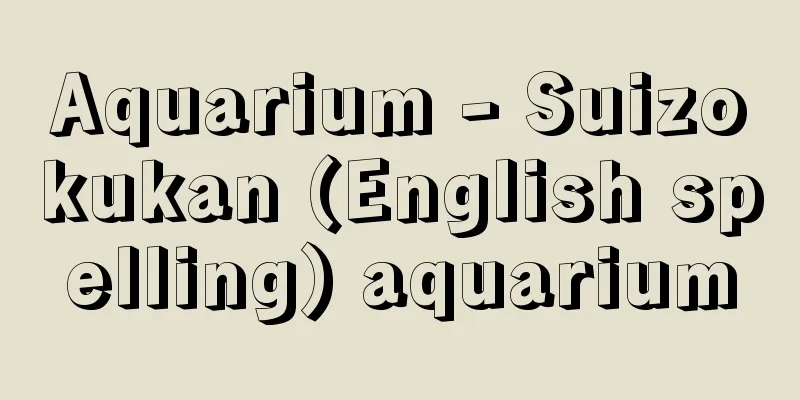Yasutsugu Shigeno

|
Year of death: December 6, 1910 (Meiji 43) Year of birth: 1827.11.24 (1827.10.6) A Meiji period Chinese scholar and historian. Doctor of Literature. Pen name: Seishō. Born in Sakamoto Murakami-chō, Kagoshima-gun, Satsuma Province (Sakamoto-chō, Kagoshima City), he died in Ichigaya, Tokyo. In 1848, he studied at the expense of the domain at Shōheizō Academy, and became a teacher at the Zōshikan, but was exiled to Amami-Ōshima in 1857. In 1863, he participated in the Anglo-Satsuma War, and in 1865, at the behest of Shimazu Hisamitsu, he compiled the Kōchō Seikan. In the new government, he belonged to the lineage of Okubo Toshimichi, and in 1875, he became deputy chief of the Daijōkan's History Compilation Bureau. Although the government system changed from this point on, he continued to oversee the collection of historical materials and the compilation of Shirui, the Shiryō Kanbōhon, and the Dai Nihon Henronshi, until he retired in 1826. During this time, in 1888, he became a member of the executive committee of the Tokyo Academy (later the Imperial Academy), where he often gave speeches, advocating the rise of Chinese classics and historical studies. In 1890, he became a member of the House of Peers, and together with Toyama Shoichi, he proposed a plan for the establishment of an Imperial Library. From 1888 to 1891 and from 1898 to 1901, he served as a professor at the Faculty of Letters of the Imperial University (later the University of Tokyo), where he was involved in the establishment of the Department of National History (later the Department of National History). Under the guidance of the foreign teacher employed by the government, Rees, he founded the Historical Society, and managed its journal, the Historical Society Journal, making national history independent from traditional classical studies, developing the results of the Edo Shogunate's history revision work, and working hard to enrich historical research. He overcame the academic style of the Dai Nihonshi and denied the historical story of the breakup between Kojima Takanori and Kusunoki Masashige, and was called the "Doctor of Eradication." In 1940, at the age of 81, he went on a six-month business trip to Vienna from the Academy of Sciences, visiting Europe and interacting with the academic world of China via Siberia. He was a tolerant and well-mannered person, and from a young age he excelled in education and leadership. He was also skilled in calligraphy. <Works> "Public Law of the World", "Chronological History of Japan", "True Stories of the Ako Gishi", "Draft National History Eyes" (co-authored with Kume Kunitake and Hoshino Tsune), "History of the Great Japanese Restoration", "Draft Comprehensive National History", "Seisai Bunsho" and "Seisai Bunsho", "Satsuma-han Historical Discussion" (co-authored with Komaki Masanori), "Collection of Dr. Shigeno's Historical Papers" (Satsuma-han History Research Society) <References> "History of Modern Japanese Historiography" (Okubo Toshiaki), "Academic Overview of Tokyo Imperial University" (Tokyo Imperial University), "Japanese History Revision and Historiography" (Sakamoto Taro), "Draft Chronology of Dr. Tsuji Zennosuke's Life" (ed. by the 100th Anniversary of the Birth of Professor Tsuji Zennosuke), "Collection of Historical Works of Okubo Toshiaki" (7 volumes), "A Brief History of the Historical Society" (Historical Society of Japan), "Historical Perception" (Tanaka Akira and Miyaji Masato) (Nobuhide Akimoto) Source: Asahi Japanese Historical Biography: Asahi Shimbun Publications Inc. About Asahi Japanese Historical Biography |
|
没年:明治43.12.6(1910) 生年:文政10.10.6(1827.11.24) 明治時代の漢学者,歴史家。文学博士。号成斎。薩摩国鹿児島郡阪元村上町(鹿児島市坂元町)に生まれ,東京の市ケ谷に没。嘉永1(1848)年,昌平黌に藩費留学し,造士館訓導師になるが,安政4(1857)年奄美大島へ流刑になった。文久3(1863)年薩英戦争に参加し,島津久光の命令により,慶応1(1865)年『皇朝世鑑』を編纂した。新政府では,大久保利通の系統に属して,明治8(1875)年太政官修史局副長になり,これより官制の変更はあったが,一貫して史料の収集,志類・『史料稿本』・『大日本編年史』の編纂を指揮して,26年に辞めた。この間,11年には東京学士会院(のちの帝国学士院)の幹事会員になり,しばしば演説して,漢学と史学の興起を提唱した。23年貴族院議員になり,外山正一と連名で帝国図書館の官制案を建議する。 明治21年から24年および31年から34年の間は,帝大文科大学(のち東京帝大)教授に在職,国史科(のちに国史学科)の創設にかかわり,お雇い外国人教師リースの教示により,史学会を創立,機関紙『史学会雑誌』を経営して,国史学を旧来の経学から自立させ,江戸幕府の修史事業の成果を発展させて,考証史学の充実に尽力した。『大日本史』の学風を克服し,児島高徳や楠木正成父子決別の史話を否定したので,「抹殺博士」と称された。40年,81歳で学士院から6カ月にわたりウィーンに出張し,欧州に遊び,シベリア経由で清国の学界と交流した。人となりは寛緩,儀容が端正で,若いころから育英に長じ,統率に優れた。仕舞,書道をよくする。<著作>『万国公法』『編年日本外史』『赤穂義士実話』,久米邦武・星野恒と共著『稿本国史眼』,『大日本維新史』『国史綜覧稿』『成斎文初集』『成斎文二集』,小牧昌業と共著『薩藩史談集』,薩藩史研究会『重野博士史学論文集』<参考文献>大久保利謙『日本近代史学史』,東京帝国大学『東京帝国大学学術大観』,坂本太郎『日本の修史と史学』,辻善之助先生誕生百年記念会編『辻善之助博士自歴年譜稿』,大久保利謙『大久保利謙歴史著作集』7巻,『史学会百年小史』,田中彰・宮地正人『歴史認識』 (秋元信英) 出典 朝日日本歴史人物事典:(株)朝日新聞出版朝日日本歴史人物事典について 情報 |
Recommend
Mercury battery - mercury battery
A primary battery that uses mercury oxide (HgO) a...
Domestic Relations Law - Kajishinpanhou
This law provides for the adjudication and mediati...
Theile, J.
...But in oratorio-style passion music, newly com...
Moina dubia (English spelling) Moinadubia
…[Shigeo Gamou]. … *Some of the terminology that ...
Fuhrer (English spelling)
… [Political History, Diplomatic History] The pol...
Dhrupad (English spelling) [Hindi]
A form of Indian vocal music. Formerly called dhru...
Candida
A genus of fungi and fungi imperfecti. It grows by...
skeppslag
...The place name is related to ro (rowing) (Inci...
Sanmai - Scattered rice
〘 noun 〙 When performing a Shinto ritual, rice is ...
Gentaro Kodama
Year of death: July 23, 1906 (Meiji 39) Year of bi...
Benzidine - benzidine
An aromatic amine. Also called 4,4'-diaminobi...
Converter gas - Tenro gas (English spelling)
This refers to the gas generated from converters u...
Arrebo, A. (English spelling) ArreboA
… The 16th century was the age of Reformation and...
Liu Zongzhou - Ryu Soshu
A Chinese thinker in the late Ming Dynasty. His p...
Godel, R.
...Its impact was not limited to linguistics, but...









